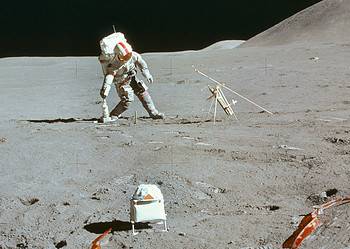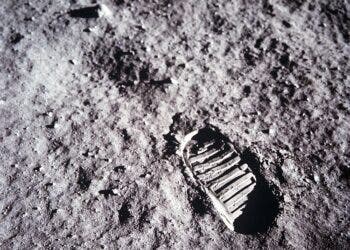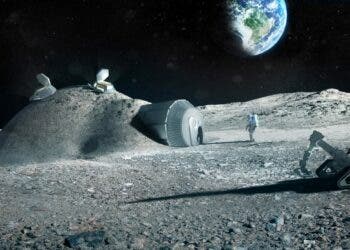
In a significant step toward living and working on the Moon, a group of scientists has developed a method to extract water from lunar soil and utilize it to produce breathable oxygen and rocket fuel ingredients, all using sunlight.
The technology, developed by researchers at the Chinese University of Hong Kong, Shenzhen, and other institutions, could one day allow astronauts to survive and travel farther in space without depending entirely on supplies from Earth. That means lighter, cheaper missions and possibly a permanent lunar base.
“We never fully imagined the ‘magic’ that the lunar soil possessed,” said Lu Wang, a senior author of the study published in Joule, a journal from Cell Press. “The biggest surprise for us was the tangible success of this integrated approach.”
Water is more than something to drink. It’s a lifeline in space. Astronauts need it to stay hydrated, but it can also be split into hydrogen and oxygen, two basic building blocks for fuel and breathable air.
The problem? Water is heavy. According to the study, shipping just one gallon of water into space costs about $83,000. That adds up quickly when each astronaut drinks about four gallons a day. For long-term lunar missions or for using the Moon as a launch pad for missions to Mars or beyond, carrying every drop from Earth just isn’t practical.
So scientists have been searching for a way to tap into the Moon’s own resources. And it turns out, there’s more available up there than once thought.
What’s in Moon Dirt?
Lunar soil isn’t just dry, gray dust. Thanks to data from China’s Chang’E-5 mission, scientists know that it contains small amounts of water, likely trapped in minerals and glasses formed by impacts or solar wind. One of those minerals, called ilmenite — a dark, heavy compound made of iron, titanium, and oxygen — is especially useful. It not only stores water-related chemicals but also helps trigger useful reactions when heated.
Previous methods for extracting that water were complicated and took a lot of energy. The new technique simplifies the process and adds a significant bonus: The sun does the heavy lifting.
The key to this breakthrough is a phenomenon known as photothermal catalysis. Put simply, the researchers used sunlight to heat up the lunar soil, releasing water in the form of vapor. Then, in the same system, they mixed the vapor with carbon dioxide and converted it into three useful products: oxygen (for breathing), hydrogen (for fuel), and carbon monoxide (also used in fuel production).
All this was done using actual lunar samples from the Chang’E-5 mission, as well as simulated moon dirt created to match the real stuff. The researchers placed the soil in a sealed chamber, added carbon dioxide, and exposed it to concentrated sunlight to heat everything to approximately 482 degrees Fahrenheit (250 Celsius). Over several hours, the system produced measurable amounts of gas.
“Our results showed this could be done without adding extra steps or chemicals,” said Wang. “You just need sunlight, CO2, and moon dirt.”
The big dream is in situ resource utilization, or ISRU — a fancy term for using what’s already available on another planet or moon instead of bringing everything from home. If this method proves effective on a larger scale, it could support astronauts on the Moon by providing them with access to water, air, and fuel without requiring resupply missions from Earth.
The technology might even lay the groundwork for a kind of lunar version of photosynthesis — converting carbon dioxide and water into fuel and oxygen using sunlight, just like plants do on Earth.
Scientists envision a system where astronauts’ exhaled CO2 is collected at night when temperatures drop sufficiently to freeze it, and then used the next day in a solar-powered reactor with lunar soil. The result is a renewable supply of breathable oxygen and chemicals to power rockets or other equipment.
Not Quite Ready for Liftoff
While the lab tests are promising, putting this system to work on the Moon won’t be easy. Lunar soil varies from place to place, and temperatures swing wildly — from -280°F (-173°C) at night to over 250°F (121°C) during the day. Solar radiation is intense, and the Moon has no atmosphere to moderate these extremes.
Another challenge is that astronauts don’t exhale enough CO2 to power the entire system, so other sources, such as stored dry ice, would be needed.
Although the reactions worked in the lab, the output is still too small to fully support human life. Wang and his team say they’ll need to improve the catalyst’s performance, better manage heat, and design tougher reactors that can survive in lunar conditions.
Still, the proof of concept is an important step. If successful, this simple sunlight-powered system could help turn the Moon from a barren rock into a supply station for the next era of space exploration.







